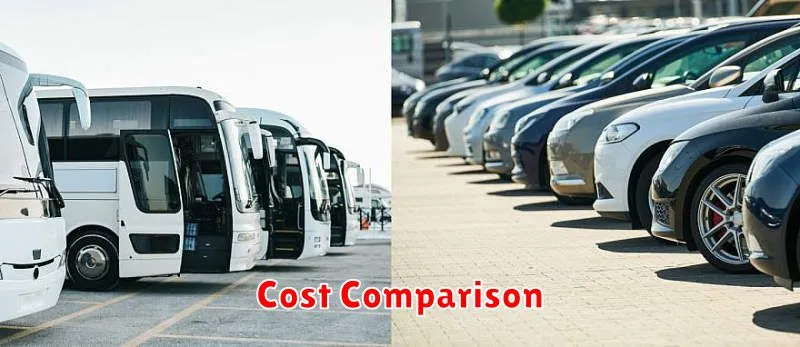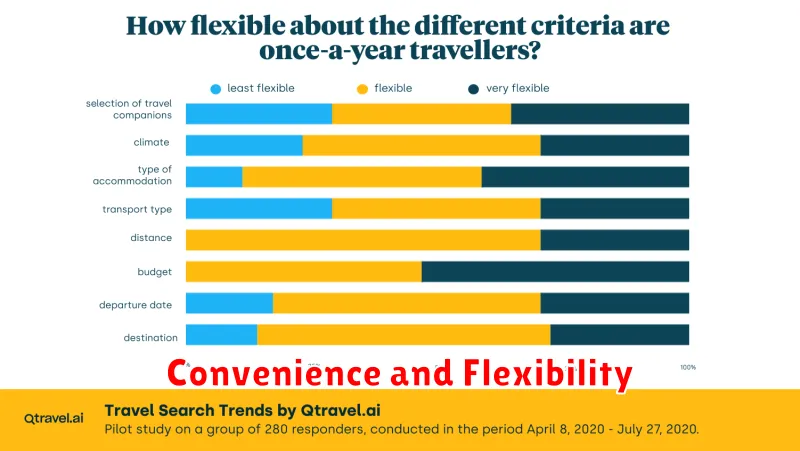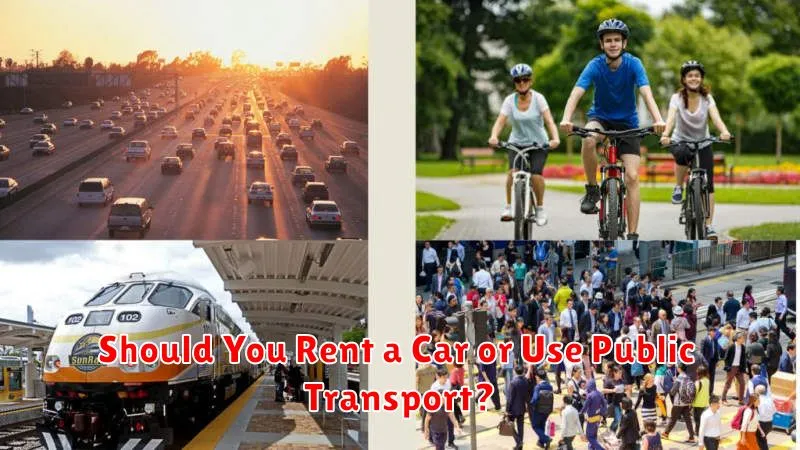Deciding between renting a car and using public transport can be a complex dilemma, especially when traveling. Factors such as cost, convenience, travel time, and environmental impact all play a significant role in making the right choice. This article will explore the advantages and disadvantages of both renting a car and utilizing public transportation to help you determine the best option for your next trip. Whether you prioritize budget, flexibility, or sustainability, understanding the nuances of each choice is crucial.
Navigating the decision of car rental versus public transport requires careful consideration of your specific needs and the context of your journey. Are you embarking on a cross-country road trip where a rental car offers unparalleled freedom? Or are you exploring a bustling city where public transport provides an efficient and cost-effective way to navigate the urban landscape? This article will delve into the key considerations, helping you weigh the pros and cons of renting a car against the benefits and drawbacks of using public transportation, empowering you to make an informed decision tailored to your individual travel circumstances.
When Renting a Car Makes Sense
Renting a car offers distinct advantages in certain travel scenarios. It becomes a practical choice when your destination lacks reliable public transportation, particularly in areas with limited connectivity or infrequent service. This is especially true for travelers venturing into rural areas or exploring multiple destinations within a short timeframe.
Convenience is another key factor. A rental car provides flexibility and eliminates the constraints of fixed routes and schedules. This is particularly beneficial for families traveling with young children, seniors, or individuals with mobility issues, allowing for greater comfort and control over the journey.
Furthermore, renting a car can be cost-effective for groups or families. The per-person cost can be significantly lower compared to individual public transport fares, especially for longer distances or larger groups. Additionally, a rental car allows for spontaneous detours and exploration, enhancing the overall travel experience.
Advantages of Public Transportation
Utilizing public transportation offers several key benefits, especially when compared to renting a car. Public transport is often a more economical choice. The cost of a bus or train ticket is typically far less than the combined expenses of renting a vehicle, paying for fuel, and parking.
Public transportation also contributes to a greener environment. By sharing a ride with numerous other passengers, the overall carbon footprint per person is significantly reduced compared to individual car travel. This helps alleviate traffic congestion, contributing to improved air quality in urban areas.
Furthermore, public transit offers a level of convenience. Riders can relax, read, or work during their commute, avoiding the stress and responsibility of driving. This is particularly advantageous in unfamiliar cities where navigating can be challenging.
Finally, using public transportation can be safer. Professional drivers and regulated systems generally result in lower accident rates compared to private vehicles.
Cost Comparison

A crucial factor in deciding between renting a car and using public transport is the overall cost. Renting a car involves the base rental fee, insurance, fuel, parking, and potential tolls. These costs can add up quickly, especially for longer trips or in areas with high parking fees.
Public transport typically involves fares for buses, trains, or subways. While generally cheaper than renting a car, costs can vary depending on the distance traveled and the type of transportation used. Consider the cost of individual tickets versus day passes or multi-ride cards for better value.
Other cost considerations include the potential for ride-sharing services which can offer a middle ground in terms of pricing. However, these prices can fluctuate based on demand and availability.
Convenience and Flexibility

When deciding between renting a car and using public transport, convenience and flexibility are key factors. Renting a car offers unparalleled freedom to travel at your own pace and reach destinations inaccessible by public transit. You control your schedule and route, eliminating waiting times and fixed routes.
Public transport, while often more affordable, can be less convenient. Schedules must be adhered to, and routes may not directly serve your desired location. This can lead to longer travel times and the need for transfers, potentially impacting your itinerary.
Consider your specific needs and travel style. If spontaneity and direct access are paramount, renting a car may be more suitable. If affordability and a more structured travel plan are priorities, public transport might be the better option.
| Feature | Rental Car | Public Transport |
|---|---|---|
| Convenience | High (Direct routes, personalized schedule) | Moderate (Fixed routes, scheduled departures) |
| Flexibility | High (Travel at your own pace, change plans easily) | Low (Limited routes, fixed schedules) |
Environmental Considerations

Choosing between renting a car and using public transport has significant environmental implications. Public transportation generally offers a more sustainable choice.
Reduced Emissions: Buses and trains carry numerous passengers, consolidating individual trips and thereby diminishing the overall carbon footprint compared to single-occupancy vehicles. This contributes to better air quality and a healthier environment.
Fuel Efficiency: Public transport systems often leverage fuel-efficient technologies and optimized routes, further reducing their environmental impact. While rental cars can offer newer models with better mileage, the sheer volume of vehicles on the road contributes significantly to pollution.
Congestion Mitigation: Opting for public transport helps alleviate traffic congestion, which in turn lowers fuel consumption and emissions caused by idling vehicles.
Best Options for Urban vs Rural Travel
Choosing between a rental car and public transportation depends heavily on your travel destination. In urban areas, public transport often provides a cost-effective and convenient solution. The extensive network of buses, subways, and trams typically covers most points of interest, eliminating the need for parking and navigating congested streets.
Conversely, rural destinations often necessitate a rental car. Public transportation in these areas can be limited or non-existent, making a car essential for reaching remote locations. The flexibility offered by a car allows for spontaneous exploration and access to areas not served by public transit.
Consider a hybrid approach for trips encompassing both urban and rural areas. Utilize public transport within the city and rent a car for excursions into the countryside. This approach offers a balance of convenience, cost-effectiveness, and accessibility.
Final Decision Tips
After considering the pros and cons of both renting a car and using public transport, making the final decision can still be challenging. These tips can help guide you:
Prioritize Your Needs
Budget: If cost is your primary concern, public transport is generally cheaper. However, factor in potential ride-sharing costs if public transport isn’t easily accessible.
Convenience: If you value flexibility and direct routes, a rental car offers more convenience. However, consider traffic congestion and parking challenges in your destination.
Comfort: Consider your personal comfort level. Public transport can be crowded and have limited luggage space, while a rental car offers a private and more comfortable experience.
Consider Your Destination
Research the public transport infrastructure at your destination. Is it reliable, efficient, and readily available? Also, research the driving conditions. Are roads easy to navigate? Is parking readily available and affordable?

